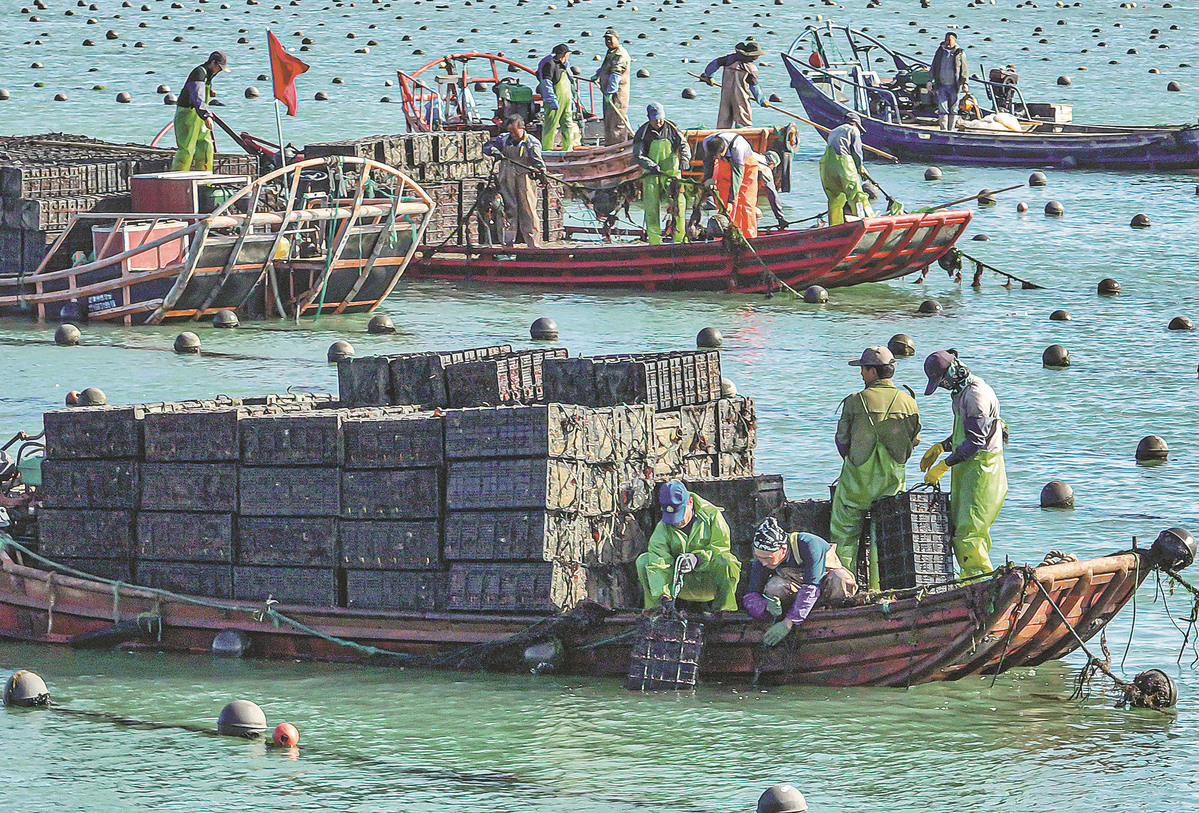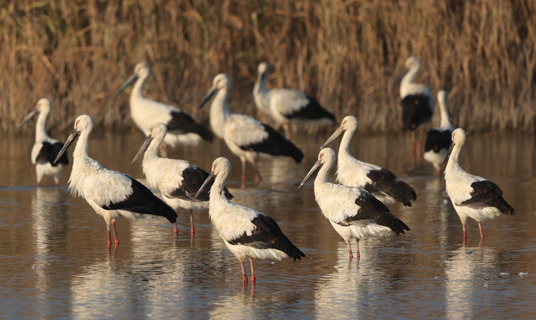A sea change for abalone
 Workers load abalones onto a ship bound for Fujian for the winter in an aquaculture area in Lidao township, Rongcheng city, Shandong province, on November 15, 2023. ZHENG CHENGLE/CHINA DAILY
Workers load abalones onto a ship bound for Fujian for the winter in an aquaculture area in Lidao township, Rongcheng city, Shandong province, on November 15, 2023. ZHENG CHENGLE/CHINA DAILY
New varieties
Lianjiang's abalone story began in 1989. But the industry fell into a slump in the late 1990s after the abalone suffered from disease. In response to the challenges, You Weiwei, a professor at the College of Ocean and Earth Sciences, Xiamen University, began developing new varieties in 2003.
At that time, China had only two native abalone varieties, both of them sensitive to water temperature. Many abalones died in summer. To help abalones survive the season, farmers had to transport the abalone from the southern region to the north in April and take them back south at the end of November using live water vessels and vehicles. By doing so, the survival rates and quality of the abalone were improved. However, the 1,800-kilometer trip increased costs and there was the risk of the abalones dying from hypoxia.
You decided to change that. After six to seven years of research, a new variety of abalone, Dongyou No 1, was developed that had an increased disease resistance of 30 percent. Another new variety -Xipan abalone - had increased resistance to high temperature by 2.2 C, making abalone migration unnecessary and abalone farmers more confident about the industry.
You was not content to rest on his laurels. He wanted to increase the size of abalone. China's two native varieties were small, up to 100 grams at most. In response, You constructed a technical system of distant hybridization and bred a new variety- Lvpan abalone, which increased the weight of a single abalone to 200 grams after two years of breeding and 500 grams after four years.
In 2020, he won the first prize for science and technology progress of Fujian province, the only first prize for fisheries in Fujian in the past 10 years.
"After obtaining the national new variety certificate in 2018, our seedlings have covered the main abalone farming areas in China, and have been well recognized by farmers. We have produced dried abalone products that can be compared with the international market, and no longer need to import from abroad," said You.
As the abalone have grown larger, You successfully produced China's first batch of abalone pearls in March 2023.
"The color is very special. It's blue-green, even with a little purple. We hope to provide a new product for China's seawater pearl industry," He added.
You said next he wants to cultivate more new delicious abalone varieties to meet people's demand.




